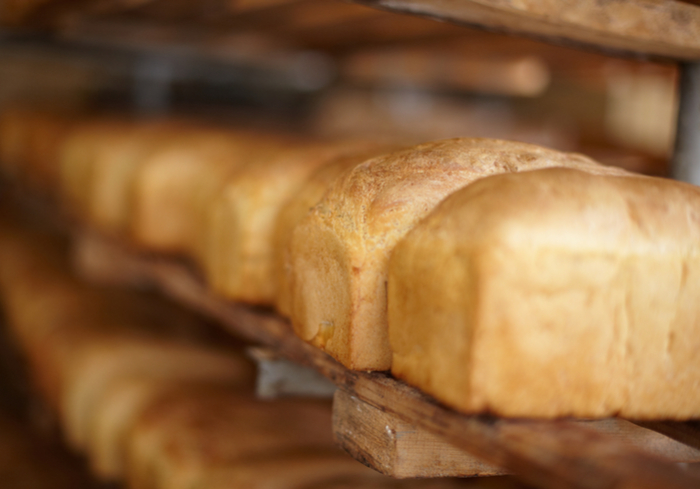
To provide an alternative to days-old bread that is baked off-site, startups are helping grocers bake bread within their own stores through interactive robots that do the heavy lifting. The BreadBot, which is a project of The Wilkinson Baking Company, is a fully automated breadmaking machine designed for retail environments like supermarkets, and seeks to change the way bread is made and sold. “The BreadBot is the first time that the opportunity for continuously fresh bread throughout the day in the grocery store has existed,” Wilkinson Baking Company CEO Randall Wilkinson told PYMNTS in an interview.
Wilkinson said the bulk of bread has historically been produced – and still is – in a central factory, and is then transported to the grocery store. With this distribution model, however, the aroma of freshly baked bread dissipates over the time that passes between when it is manufactured and when it hits the store shelves. As a result, Wilkinson said, bread has been a stagnant or declining category in supermarkets for decades. “It’s not too hard to understand why, given that’s been the primary choice,” he noted.
The BreadBot may shake up the industry – and bring fresh bread into grocery stores – with the help of automation. It takes in flour, salt, yeast and whatever ingredients one would like to add to bread into a large hopper. The machine can then can “wake up” in the early hours of the morning (say, 3:00 a.m.) and start baking bread. When 6:00 a.m. rolls around, the machine is already placing bread on the shelving and the cooling bot. Staff can then slice and bag bread for customers who want an alternative to unsliced loaves.
The Bot
To order bread from the BreadBot, a consumer can use a touchscreen to have a loaf dispensed. The machine offers two different ways for consumers to choose a loaf. For starters, the consumer can choose a loaf that was just baked by the machine, pushing a button for a hot loaf. She can then pick up the loaf from a dispensing window and put it into a paper bag with a barcode before heading to the checkout counter.
In the second case, the consumer can choose a particular loaf that the machine has baked. To make a selection, she can pull up a miniature map of the machine’s cooling cabinet on the touchscreen that shows the positions of all the bread in the machine. When she chooses a particular loaf, the machine displays information such as when it was baked and at what temperature. When the consumer confirms her choice, the dispenses the bread.
The allure of the machine is the baking process. Every six minutes, a dough ball is released and rolls out on the conveyor belt and into the pans. “Part of the theatre of the machine here at CES [the Consumer Electronics Show] and in the store is just the engagement of watching this process,” Wilkinson noted. In addition, he said the touchscreen will show consumers the number of seconds until the next loaf enters the process. “There’s a tremendous amount of engagement.”
The Road Ahead
For now, Wilkinson said the BreadBot machine on display at CES is one of the company’s last prototypes, and that the initial manufacturing run is in process. He estimates that the company will probably have in-store proof of concept in April. Beyond grocery stores, Wilkinson noted the machine could come to other retail environments like C-stores and coffee shops. And, while the machine currently makes commercial pan bread (think sandwich bread), Wilkinson thinks it might someday be possible to make other varieties of bread, such as baguettes.
When asked if the company was considering making an unattended retail vending machine, Wilkinson said the reality is that consumers buy bread in a grocery store. And, because of the high demand for the machine, he is not looking to gain new ground by placing the machines in airports, malls or other environments. (The heart of distribution and consumption is the grocery store as well as caterers, after all.) Overall, Wilkinson said the company is “optimistic that over time, this becomes a more dominant form of people getting their bread.”
Aside from the grocery store and bread, robotics has come to other areas of food preparation. Miso Robotics’ Flippy can, well, flip burger patties. In addition, Zume Pizza uses robots to help with repetitive tasks, like spreading tomato sauce on pizzas and placing them in the oven. Little Caesars, too, filed for an “apparatus” to make pizza last year. The latter innovation reportedly comes with “a pizza sauce-spreading station, a cheese-spreading station and a pepperoni-applying station.”
Will food preparation and baking go to our robotic overlords someday? With the technology created by companies like Miso Robotics, Zume Pizza and Wilkinson Baking Company, robots may very well shape the way that food is prepared and sold heading into the future.